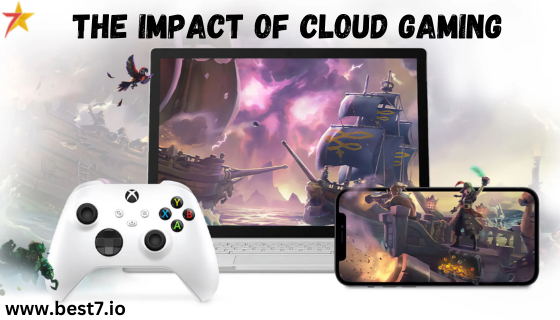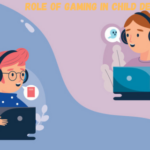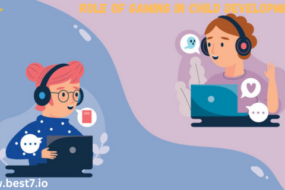
Our study has obtained two main types of results, and the first one includes direct results of our analysis, and the second one lists the potential application of such results. It is critical to note that both types are interconnected and can affect one another in use.
Still, the evolution of gaming technology and the key role of cloud gaming and streaming services, in particular, predict that they will be considered in many forms in the future.
Shifting Preferences in Gaming
According to the case studies described in the previous section, the gamers’ preferences are shifting towards cloud gaming and streaming services because of the features and opportunities they offer. Thus, the most reliable potential applications of the results, in this case, are conjectures and opportunities to improve cloud gaming and streaming services users’ experiences based on our findings and the reliability of the identified trends and patterns.
Direct Application
As cloud gaming and streaming services are developing rapidly, the main direct application of the results includes the data that can be used to develop new streaming services and underpin their many options and features. The examined case studies were chosen precisely for them to reflect the time when cloud gaming and streaming services are trying to gain popularity by using different marketing techniques and promotional channels.
Comparing Strategies for Success
They can be used to draw parallels between the two in the same manner and choose the two companies with “permissive” and “restrictive” strategies. This information can be used to further develop opportunities and attract users to wield these services, as the examples of other companies show either success or complete failure.
Potential Application
In this case, the most logical potential application is tied to the typical user’s spending. The direct result informs us that the majority of users prefer limiting their spending to paying a price equivalent to the cost of the subscription instead of paying for additional in-game features and options. Thus, at this stage, such a result is only a theoretical consideration, and it makes more sense to conduct a similar study in the future of the end-users and compare the pattern of their spending with this information.
Impact of Streaming on the Gaming Ecosystem
Streaming services have recently been integrated into the gaming ecosystem, creating a new space for players. Xbox Cloud Gaming, NVIDIA GeForce NOW, and Google Stadia are, by far, leading the process. These streaming services effectively grant the players the opportunity to play a vast amount of games on their smartphones, tablets, PCs, and even smart TVs without being restricted by hardware issues.
Technological Advancements and Player Experience
One of the critical enhancements within the streaming model should be the player’s experience. According to the reports, the improvement of 5G networks will solve the issue of latency, which means that even at high-action scenes, a gamer will not experience lags during the stream. Considering Deloitte’s predictions, it is expected that approximately 75% of gamers will be using streaming services by 2030.
This development will also indicate a shift in the market, with only half of the players receiving games in the traditional format. While the focus is typically made on the readily-transforming nature of the gaming industry, transforming is not restricted by introducing new titles. With the streaming services, players can have a variety in access, as well as a quality difference between a two-year-old and the latest release.
Future Projections
Due to the growing prevalence of cloud technology and streaming services in the gaming industry, several main trends will be shaping the future of the phenomenon. EEDAR and Niko Partners’ analysts claim that by 2025, more than half of gamers will be using their mobile devices for gaming activities.
More gamers would be using mobile devices. By 2025, more than half of gamers are expected to be using their mobile devices for gaming activities. However, the increased quality of cloud technology will make competitive games available not only on the most advanced desktops and consoles but also on mobile ones. As a result, the needs in hardware will be decreased, but the quality will remain the same.
The number of games in a subscription service’s library will rise dramatically.
The average game library will contain over 300 games by 2026, with 100 being the average number of titles now. The fact that only top-of-the-market games will be available in the libraries will encourage the need for free and interesting alternatives. As a result, a user will be able to terminate the subscription and keep a new favorite.
The share of gamers using virtual gaming will increase drastically. By 2028, every third gamer, which constitutes 37%, will be able to use the full potential of cloud technology and streaming services, including virtual reality, to play the games.
Rise of Hybrid Models
Subscription services are expected to adopt hybrid models, integrating cloud gaming with traditional downloads, enhancing player choice and convenience. As digital distribution becomes the norm, traditional retail sales are projected to decline by 30% by 2026, underscoring the shift towards online gaming.
The Role of Subscription Services
Subscription services play a critical role in influencing how the gaming landscape is changing. Platforms like Xbox Game Pass, PlayStation Now, and EA Play are leading the transformation of the gaming industry towards a future where players can play as many games as they wish for a fixed monthly fee.
Systems such as these encourage exploration by allowing players to access and sample new games without the commitment of buying each title. Further, they enable the fans to enjoy the games they love without the weight of several purchases. By 2025, the number of subscribers to the gaming subscription services is expected to be over 500 million.
This usage is a significant increase from the 200 million subscribers that exist currently in 2022). The increase can also be attributed to the realization of the vast benefits that these subscription services present to gamers, such as value for their cost, an assured community, continued support by the developers, and timely expansion of the game offerings
Subscription Services and Future Technological Advancements
Due to continued technological advancements in the gaming sector, the subscription services of the future will most likely involve not only traditional gaming but also virtual experiences. Virtual experiences are expected to enhance the engagement and immersion of players while also creating new avenues for developers’ revenue streams.. In the gaming sector, it is very likely that the industry will continue to adjust to facilitate the satisfaction of player demands.
Overall Impact of Cloud Gaming
Overall, the emergence of cloud gaming and streaming services is reshaping the scope of the gaming industry. While there have been varying views on the extent to which this may be the case, the projection outcome indicates that accessibility will increase and this tactic will gain in popularity. If this becomes the reality, it may be noted that the future of gaming will be both appealing and open to more people.
With a more considerable number of benefits gained in the remoteness, users can expect to play even more realistically and connect with more players across the globe. The implications of cloud gaming and streaming services are expected to last for many years, and in the future, they will continue redefining how individuals play their favorite games accordingly.












